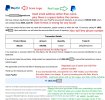britechguy
Well-Known Member
- Reaction score
- 4,835
- Location
- Staunton, VA
Definitely 2 different shadings on the logos. I wonder if one is personal PP and the other is business PP?Edit: Oops! Brian beat me to it.
Here is the PayPal logo that shows beside the search result when I search for PayPal: View attachment 17593Here is the one when I click on that link: View attachment 17594
I agree with you. I can usually spot a scam right off. If I think something's hinky about an email, I'll read through it, close it, and re-read later to see what I might have thought was suspect about it.It also makes the scam a bit more sophisticated that it is using an actual variant of the PayPal logo as opposed to a mock-up.
In this case, I'm fine with both being "real" as my main point is to have people pay attention to logos. I've seen more than my share of, "close, but nowhere close enough to get a cigar" variants on logos that the unobservant could be tricked by.

